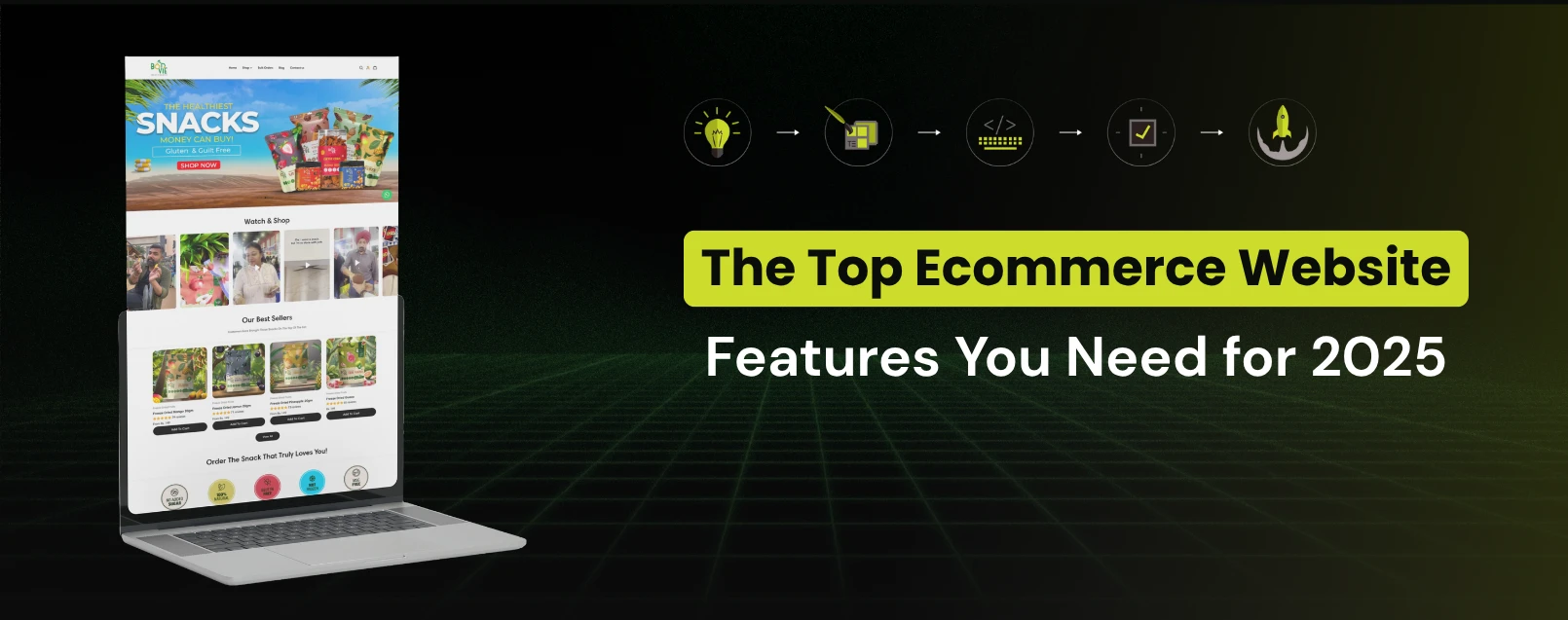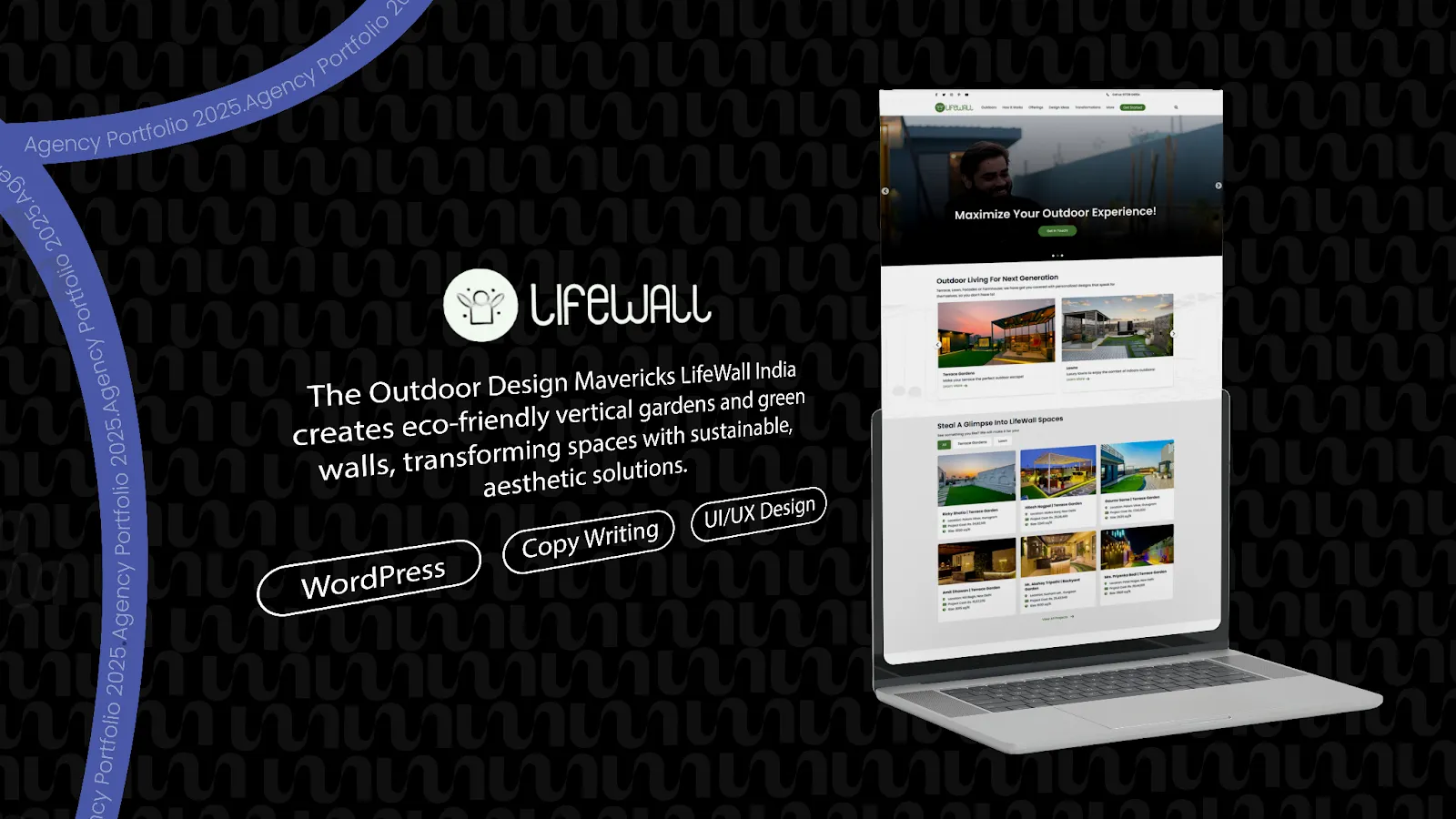

The Top Ecommerce Website Features You Need for 2025

As we enter 2025, the ecommerce industry continues to evolve rapidly. With new technologies and shifting consumer expectations, businesses need to ensure that their ecommerce websites are user-friendly, scalable, and optimized for performance. To stay competitive, it’s important for ecommerce stores to integrate the latest features that enhance user experience (UX), improve conversion rates, and ensure a seamless shopping experience.
In this article, we’ll dive into the top ecommerce website features you need to include in your online store in 2025. Whether you’re building a new site or updating an existing one, these features will help you stay ahead of the competition and meet the demands of today’s ecommerce customers.
1. Mobile-First Design
With mobile commerce growing at an unprecedented rate, mobile-first design is no longer optional—it’s a necessity. In 2025, more consumers than ever will shop from their mobile devices, making it essential for ecommerce websites to provide a responsive and optimized mobile experience.
Why This Matters in 2025:
- Mobile-first design ensures that your website adapts seamlessly to various screen sizes, providing a great experience across all devices.
- Google’s mobile-first indexing now prioritizes mobile-friendly websites in search results, meaning a mobile-optimized website is crucial for both SEO rankings and user engagement.
Key Mobile-First Features:
- Responsive layouts that adjust to all screen sizes.
- Fast-loading pages for mobile users, even with limited bandwidth.
- Mobile-friendly navigation and touch-friendly buttons for easy browsing.

2. Advanced Search and Filtering Options
As ecommerce websites grow, it becomes increasingly important to make it easy for customers to find exactly what they’re looking for. Advanced search and filtering options will allow users to quickly narrow down their choices and find products that match their preferences.
Why This Matters in 2025:
- Customers expect convenience and quick access to products, and having a powerful search feature with filters (by price, color, size, rating, etc.) will significantly improve their shopping experience.
- A well-optimized search function will help reduce bounce rates and increase conversions by guiding users to relevant products.
Key Features to Include:
- Search bar with autocomplete for quick product suggestions.
- Filters for categories like size, price range, color, brand, and more.
- Sorting options (e.g., by price, most popular, or new arrivals).
3. Personalized Shopping Experience
Personalization is one of the biggest trends in ecommerce, and it’s expected to be even more critical in 2025. Personalized product recommendations, offers, and content can increase engagement and drive conversions by showing customers products tailored to their preferences and browsing behavior.
Why This Matters in 2025:
- Personalized experiences lead to higher customer satisfaction and loyalty. Customers are more likely to make a purchase when they feel the website understands their needs.
- With the integration of AI and machine learning, ecommerce websites can predict what products a user might be interested in and suggest them accordingly.
Key Personalization Features:
- Product recommendations based on past purchases or browsing history.
- Dynamic content that adapts to the customer’s preferences, such as showing promotions based on their location or past behavior.
- Custom offers or discounts for returning customers.
4. AI-Powered Chatbots for Customer Support
AI-powered chatbots are becoming an essential feature for ecommerce websites. They can handle a wide range of customer service tasks, including answering questions, assisting with product selection, and providing real-time support.
Why This Matters in 2025:
- Customers expect fast and efficient service, and chatbots provide instant responses to common queries, improving the overall user experience.
- 24/7 availability through chatbots ensures that customers can get help whenever they need it, even outside business hours.
Key Chatbot Features:
- Product recommendations and search assistance via chatbots.
- Order tracking and shipping inquiries handled by bots.
- Live chat integration to connect customers to human agents when needed.
5. Secure and Multiple Payment Options
Offering a variety of payment options and ensuring that the payment process is secure is crucial for any ecommerce website. As online fraud continues to rise, security is more important than ever.
Why This Matters in 2025:
- Secure payment options like SSL certificates, two-factor authentication, and PCI compliance are essential for protecting both your business and customers.
- Multiple payment methods (credit/debit cards, PayPal, Apple Pay, Google Pay, cryptocurrency, etc.) give customers the flexibility to choose the payment method they trust and prefer.
Key Payment Features:
- Secure checkout with SSL encryption to protect sensitive data.
- Multiple payment gateways for diverse payment methods.
- One-click checkout for returning customers, reducing cart abandonment.
6. User-Generated Content (Reviews and Ratings)
Customer reviews and ratings have become an integral part of the ecommerce buying decision. Potential buyers often rely on the experiences of others before making a purchase, so showcasing user-generated content is essential for building trust.
Why This Matters in 2025:
- Social proof is powerful. When customers see positive reviews and ratings from others, they are more likely to trust your brand and make a purchase.
- Allowing customers to share their product experiences helps build credibility and encourages engagement with the site.
Key Features for Reviews:
- Product reviews and star ratings on individual product pages.
- Customer photos and videos showcasing the product in real-life use.
- Social media integration for customers to share their purchases on platforms like Instagram and Facebook.
7. Seamless Checkout Process
A complicated checkout process can be a major deterrent for potential customers. In 2025, simplifying the checkout experience will be crucial to reducing cart abandonment rates and improving conversion rates.
Why This Matters in 2025:
- A streamlined checkout process ensures that customers can complete their purchases quickly and easily, without unnecessary steps or distractions.
- Providing guest checkout options and reducing the number of fields required during checkout will make it easier for customers to finish their orders.
Key Features for Checkout:
- One-page checkout that combines all steps (address, shipping, payment) in one view.
- Guest checkout options to avoid forcing customers to create accounts.
- Auto-fill for returning customers to speed up the process.
8. Subscription and Membership Models
Offering subscription services or membership programs is a growing trend in ecommerce, particularly in sectors like beauty, fitness, and food delivery. These models encourage customer loyalty and provide a recurring revenue stream for businesses.
Why This Matters in 2025:
- Subscriptions allow businesses to generate consistent revenue, while memberships provide exclusive benefits and encourage repeat purchases.
- Subscription options can include everything from regular product deliveries to exclusive member-only discounts.
Key Features for Subscriptions:
- Easy-to-manage subscription options for customers to choose delivery frequency.
- Exclusive member benefits, such as discounts, early access to sales, and special offers.
- Automated billing and subscription management.
9. Augmented Reality (AR) Integration
Augmented Reality (AR) is gaining traction in ecommerce, allowing customers to visualize products in their real-world environment before purchasing. This is particularly useful in industries like furniture, fashion, and home decor.
Why This Matters in 2025:
- AR features help customers make more informed purchasing decisions by giving them a virtual try-before-you-buy experience.
- AR increases engagement and reduces product returns, as customers can see how items will look in real life.
Key AR Features:
- Virtual product try-ons, such as clothing, makeup, and accessories.
- Product visualization tools for furniture and home decor.
- Interactive 3D models of products for a more immersive shopping experience.
Conclusion
In 2025, ecommerce websites need to offer a seamless, personalized, and secure experience to stay competitive. By incorporating the top ecommerce website features, such as mobile-first design, personalization, AI chatbots, and AR technology, you can enhance the customer experience, boost engagement, and drive sales.
At UnFoldMart, we specialize in creating custom ecommerce solutions that are optimized for performance, security, and user experience. Whether you're starting from scratch or upgrading your existing online store, we have the expertise to build a website that meets your business goals and exceeds customer expectations.
Contact us today to schedule a free consultation and get started on creating an ecommerce website that delivers results!
Book a Free Consultation with UnFoldMart
FAQs
Got Questions? We’ve Got Answers – Clear, Simple, and Straight to the Point
Still have questions?
No question is too small—let’s talk
We don’t just execute—we create impact. Whether you need cutting-edge campaigns, high-performing strategies, or breakthrough brand growth, we’re the team to make it happen.
Let’s turn ideas into action and results into success.






.webp)